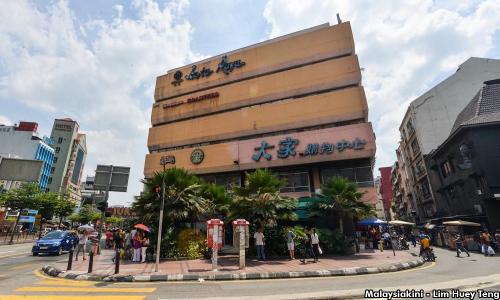Mapping Kota Raya's vibrant migrant community
In the bustling city centre of Kuala Lumpur, if you walk through the front door of the Kota Raya Shopping Complex, turn left into a dusky corner, and you will see a small shop painted pink.
The wall of the shop is decorated with several posters of stylish models and large mirrors that reflect the face of the barbers and their customers.
This is a Filipino hair salon. The tiny shop is usually crowded during weekends, with customers sitting on chairs outside the shop, waiting for their turn for a haircut, manicure or foot massage.
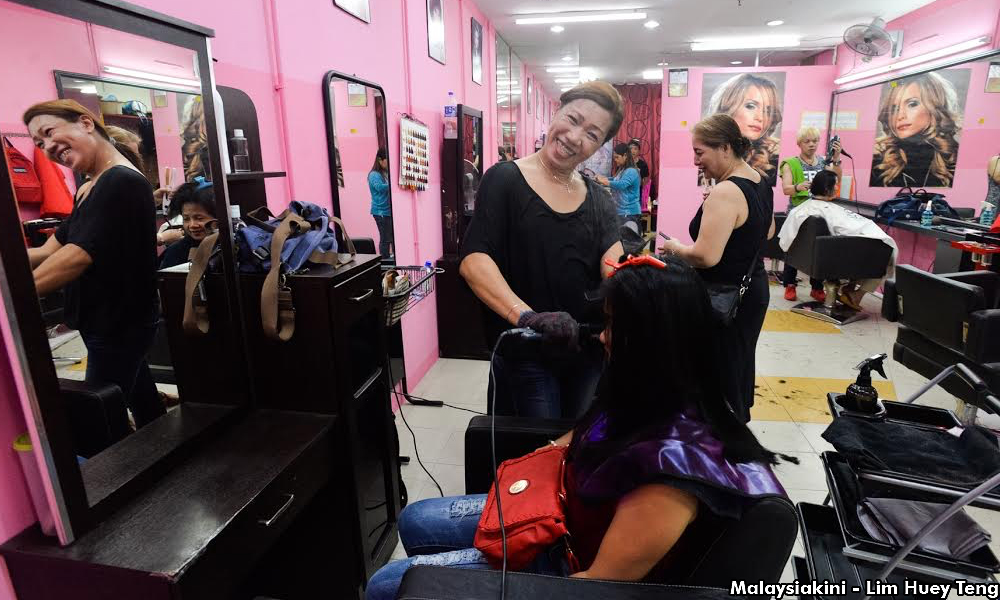 On weekdays, there will be fewer customers. The hairdressers will chit-chat on the sofas outside the shops, making fun of one another.
On weekdays, there will be fewer customers. The hairdressers will chit-chat on the sofas outside the shops, making fun of one another.
If you happen to pass by during this time, they will greet you warmly, or even wink at you. If you try to run away from their teasing, they will burst into laughter.
Jemmy (not her real name) is an enthusiastic and humorous hairdresser. She always teases me and asks: “Can you be my boyfriend?”
I always replied with an awkward smile, then she will ask: “You can still be my boyfriend even if you have a girlfriend!” Then Jemmy and her friends will laugh out loud.
Looking out of the shop, you will notice a long queue in front of a remittance company.
This is where migrant workers send most of their salary back to their hometown, and they will use the remainder for their living expenses in Malaysia.
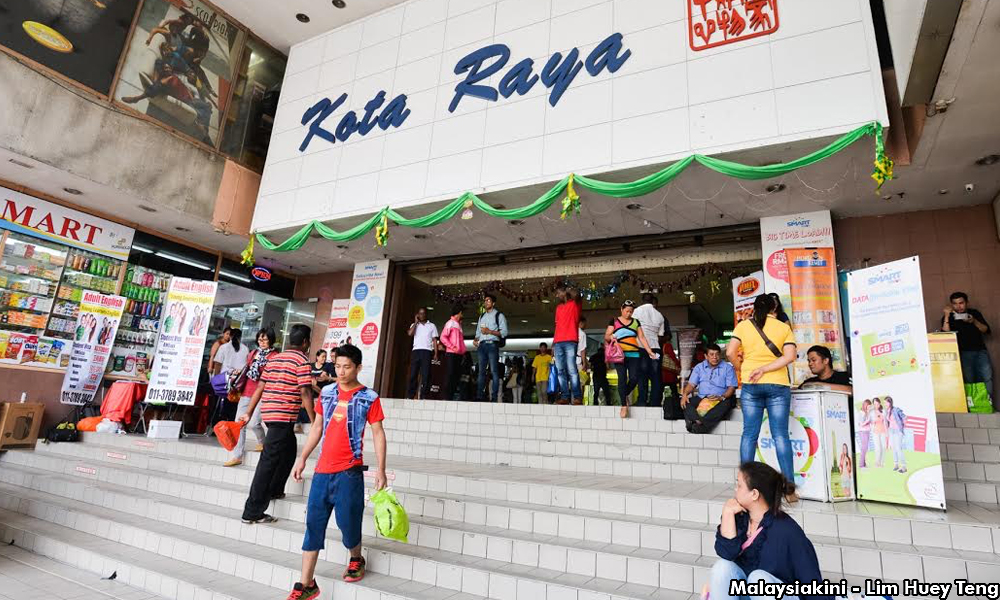 The second and third floors of the Kota Raya Shopping Complex is a Filipino girls' shopping paradise. There are also a few Filipino restaurants where migrant workers gather.
The second and third floors of the Kota Raya Shopping Complex is a Filipino girls' shopping paradise. There are also a few Filipino restaurants where migrant workers gather.
Sometimes, they will use the karaoke machine in the restaurant to sing their favourite Filipino love songs.
If you continue to walk up to the fourth floor, you will see gaming centres, snooker rooms and internet cafes.
When Kota Raya Shopping Complex was built in the 1960s, it was one of the landmarks of Kuala Lumpur, and has since become a part of the collective memories of the KL residents.
However, today it has been superseded by other fancier mega-malls located in the outer ring of KL.
Since the locals have stopped patronising it, the complex has slowly become a gathering point for Filipinos and other migrant workers.
'Bangla Market'
In fact, not only the shopping complex, but the area from the north of Petaling Street to the south of Jalan Yap Ah Loy is also where Burmese, Nepalese and Bangladeshi workers gather.
 The whole area is referred to by migrant workers simply as “Kota Raya”, and has evolved into diverse and vibrant community where migrants spend their time and money.
The whole area is referred to by migrant workers simply as “Kota Raya”, and has evolved into diverse and vibrant community where migrants spend their time and money.
When you walk out the Kota Raya Shopping Complex, and pass through to the bus station outside Mydin, you will come to Jalan Tan Siew Sin (previously named as Jalan Silang).
You will see the traditional Chinese shophouses on both sides have been turned into Bollywood DVD shops, blanket stores, travel agencies, remittance companies, grocery stores and Bangladeshi restaurants.
This street has been named the 'Bangla Market'.
One Nepalese restaurant which sells "Himalayan Cuisine" stands out from the rest on the street.
 Ambi (not her real name) who helps her uncle to manage the restaurant said, “Nepalese culture is quite close to Bangladeshi culture.”
Ambi (not her real name) who helps her uncle to manage the restaurant said, “Nepalese culture is quite close to Bangladeshi culture.”
As such, it is easier for them to communicate with each other, hence there are some Nepalese living in Bangla Market, and most of them run catering businesses.
Sometimes, Ambi is annoyed by her customers: “After work, Nepalese workers will come here to drink beer; after they get drunk, they started to tease our female workers, or curse them with bad words.
“Then I need to ask my male workers in kitchen to chase them out.”
There is a company called Malik Streams Corporation which has opened its sixth branch on the street. The owner also bought an entire building as their main office dubbed 'Wisma Malik'.
They sell different kinds of goods from Bangladesh, including soaps, spices and quilts, with the help of its workers from Bangladesh, India, Indonesia and other countries.
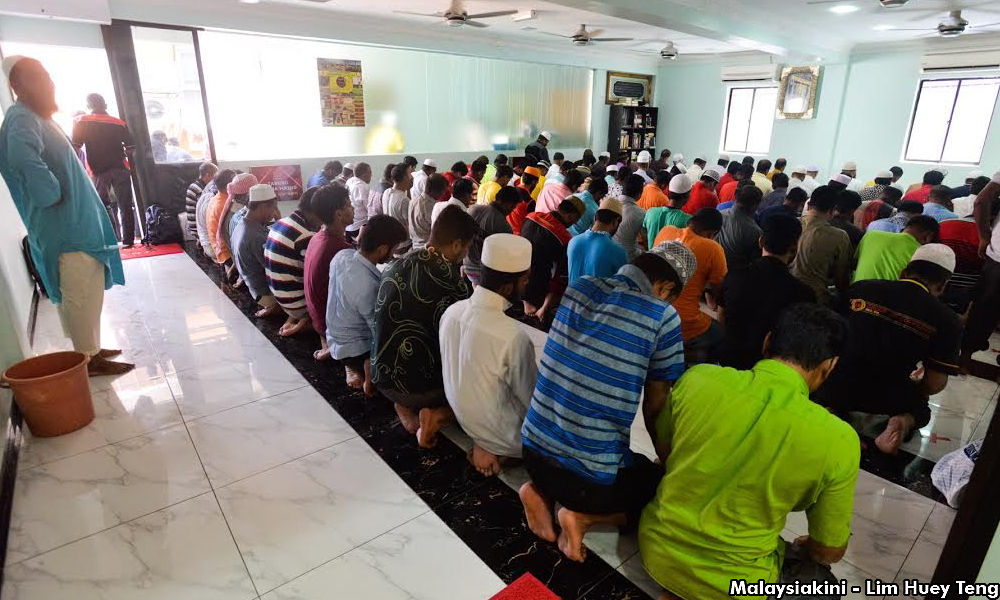 Malik Streams’ office building will be very busy during prayer times, as it has a surau in the building where Muslim migrant workers come to pray.
Malik Streams’ office building will be very busy during prayer times, as it has a surau in the building where Muslim migrant workers come to pray.
Continue to walk until the end of Bangla Market, and you will see a huge board with flags of countries from all over south and Southeast Asia. This is where the telecommunication companies advertise their packages.
For migrant workers who come to Malaysia alone, they will need overseas calling packages to contact their family. Hence, migrant workers have become the most targeted customers of these companies.
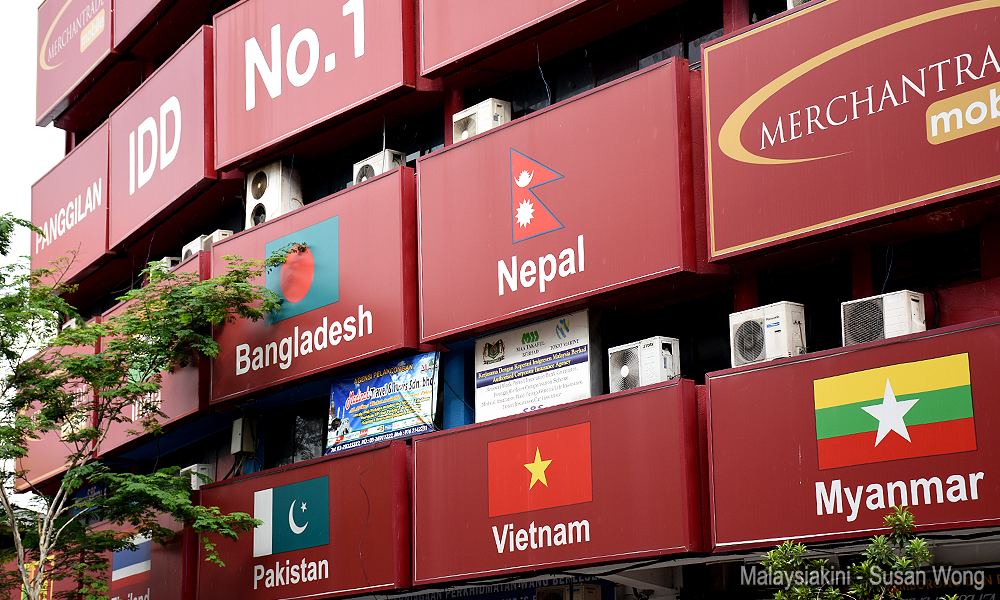 Turn right in front of the advertising board, you will walk into a wider street; there you will see that the signboards are not in Bengali but Burmese. Yes, this is Burmese street, where many Buddhists, Hindus and Muslims live and work side by side.
Turn right in front of the advertising board, you will walk into a wider street; there you will see that the signboards are not in Bengali but Burmese. Yes, this is Burmese street, where many Buddhists, Hindus and Muslims live and work side by side.
I saw a poster promoting haircuts outside a Burmese restaurant, and true enough I found a barber shop inside the establishment.
A woman in her 40s came out and asked in broken English: "You want to cut hair?" She is indeed a good conversationalist, her questions sound as if she wanted to investigate my background.
I understand that her name is Nadhin (not her real name). She walked across the Malaysia-Thailand border five years ago in order to escape from the civil war in the Kachin state.
When she safely arrived in Malaysia, Burmese Street in Kuala Lumpur became her safe haven.
I thought cutting hair in Burmese Street must be very cheap and didn’t expect that cutting and washing hair cost RM25 in total.
I asked Nadhin, why is this so expensive? She said: “In this area, living costs are expensive.”
Price' of belonging
Living costs in Kota Raya are very high: a cup of ice lemon tea can cost RM4, and the rental of a small shop unit is RM22,000. Many migrant workers find the high living expenses difficult to bear.
Even so, Kota Raya during the weekends or holidays is still crowded with migrant workers. We can see many migrant workers standing along the streets, chewing betel nuts, chatting with their friends in shops, and only leaving when the sky is dark.
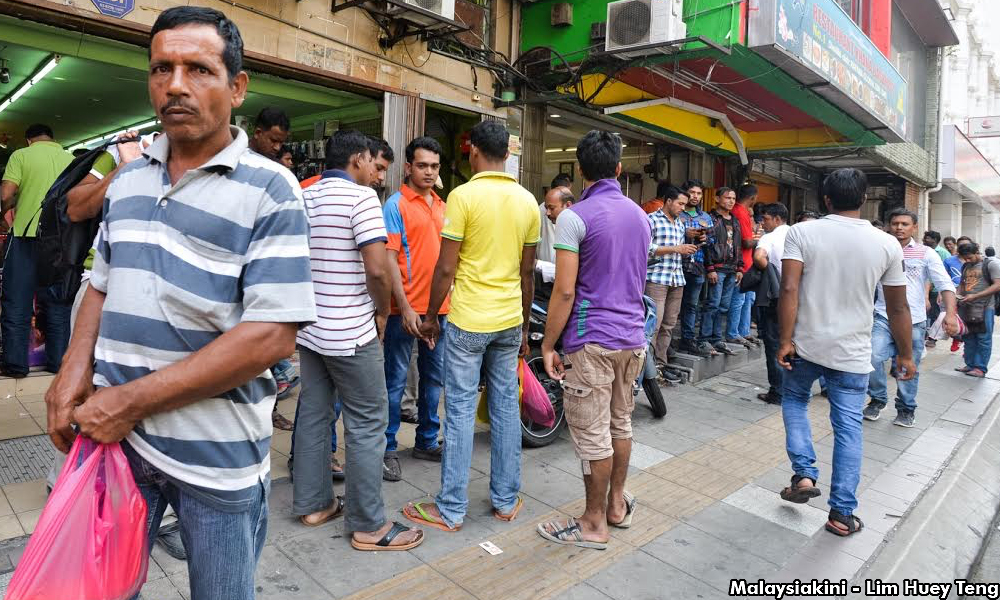 Filipino worker Josh (not his real name) said even though the cost of Kota Raya is higher, he is more willing to come here than staying at home.
Filipino worker Josh (not his real name) said even though the cost of Kota Raya is higher, he is more willing to come here than staying at home.
“During holidays I will come to the Kota Raya Shopping Complex because there are people like me or people with similar background as mine; they make me feel that I am not alone in this country.”
Josh came to Malaysia alone, and only when he comes to Kota Raya, he feels that he belongs to a community.
If you walk around Kota Raya, you will find that there are many migrant workers who have worked in Malaysia for decades, and many of them have started to run their own business, providing services for the migrant worker community.
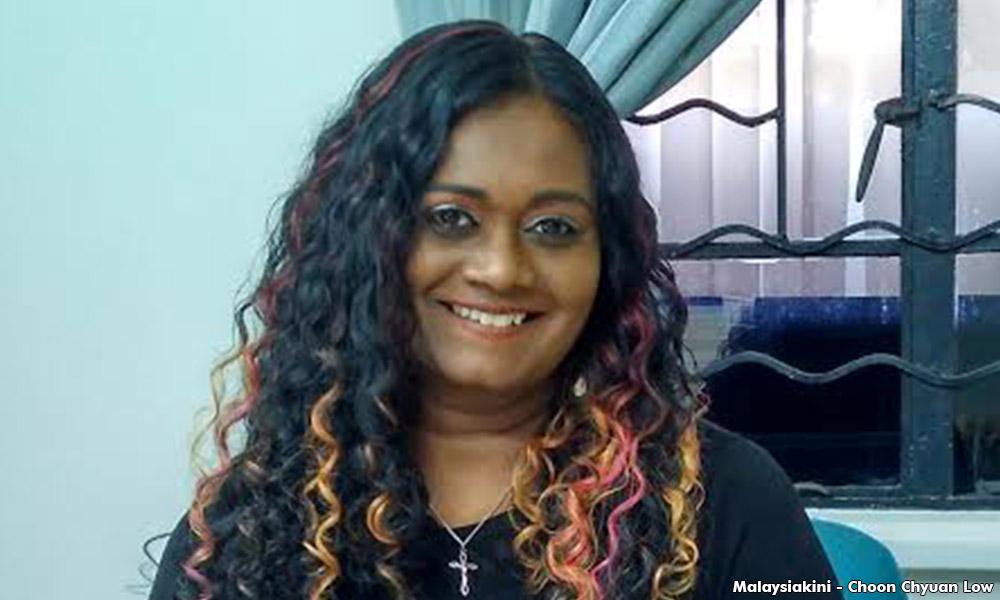 Executive director of Tenaganita, Glorene A Das, explained that Malaysia’s economy developed rapidly during the 1990s, foreign enterprises came into our country for investments and many industries began to face labour shortages, especially in the plantation, manufacturing, construction and service sectors.
Executive director of Tenaganita, Glorene A Das, explained that Malaysia’s economy developed rapidly during the 1990s, foreign enterprises came into our country for investments and many industries began to face labour shortages, especially in the plantation, manufacturing, construction and service sectors.
After they came to Malaysia, other than working for their employers, they will manage their own business during their free time, slowly accumulating capital and preparing to rent a shop.
“For example, in a construction site, there are only Chinese food or Malay food for them (migrant workers), as they have different eating habits; many hope to see dishes from their home countries.”
“They started with cooking for themselves, soon they will find that there are high demands so they start running small businesses.”
“First is food, then they want to listen to the music from their hometowns but not local favourites like Siti Nurhaliza, even it is pirated CD; they want to find a musical connections with their homeland.”
Breathing new life to old streets
Glorene also pointed out that migrant workers miss their home and so they needed to buy things from their own country. Thus there will be many DVD shops, karaokes, grocery shops, import businesses and so on to cater to their needs.
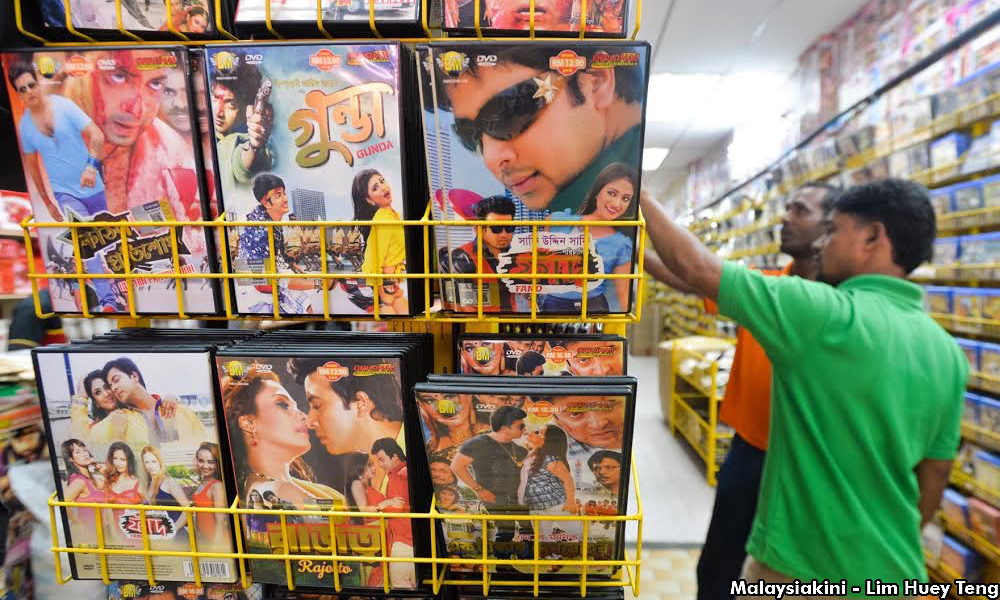 When they earned profits, they need remittance companies to help them transfer money back to their homeland, so remittance companies have been established.
When they earned profits, they need remittance companies to help them transfer money back to their homeland, so remittance companies have been established.
Thus, a community which focuses on migrant workers slowly took shape in Kota Raya.
On the other hand, this area is the nexus of Kuala Lumpur’s public transport system; migrant workers who came from other places find it easier to travel to Kota Raya.
To the east of the Kota Raya Shopping Complex is Pudu Sentral, a terminal for long-distance buses from the northern part of Malaysia; to the south-west of Kota Raya is the Pasar Seni LRT station and Kuala Lumpur KTM station, which are the main rail transport interchange for the capital city and nearby areas.
Buses which stop in front of the Kota Raya Shopping Complex and Mydin are medium-distance buses from Klang, Seremban, Rawang and other places, while the short-distance buses which travel in Petaling and Kuala Lumpur will stop at the Pasar Seni LRT Station.
A free bus service provided by the Selangor state government also allow migrant workers to travel to Kota Raya from the LRT station.
Glorene recalled, when she was still young, the Kota Raya Shopping Complex was like today’s KLCC – it was the city centre of Kuala Lumpur, and the place for young people to gather and go shopping.
“After some time, this shopping mall fell out of favour; it was overtaken by newer malls. Locals didn’t go to Kota Raya anymore; then this shopping mall and its surrounding areas began to be the gathering place of migrant workers,” she said.
Migrants want a better life
In fact, migrant workers are like the locals: they all hope to live a better life and find a sense of belonging in the community they are attached to. They do not wish to face exclusion.
When a Chinese shopkeeper from Petaling Street is being interviewed, she said: “They (migrant workers) also need to look for their livelihood, very similar to the Malaysians who went to other countries to work; everyone is hoping to get a better job.”
Walking along Petaling Street, I can’t stop but think about the history of the Chinese migration. I notice that the conditions of the migrant workers and the ancestors of the Chinese who travelled to Southeast Asia are extremely similar.
During the end of Qing dynasty, the British colonial government was developing the mining industry in Malaya and it needed manpower. The Chinese came to work as coolies in the mines.
And now, driven by global capital and market forces, migrant workers from different backgrounds are flocking to Malaysia, yet again.
For several decades, Petaling Street and Kota Raya were the gathering places of Chinese migrants, and those places eventually became Chinese communities with their own characteristics.
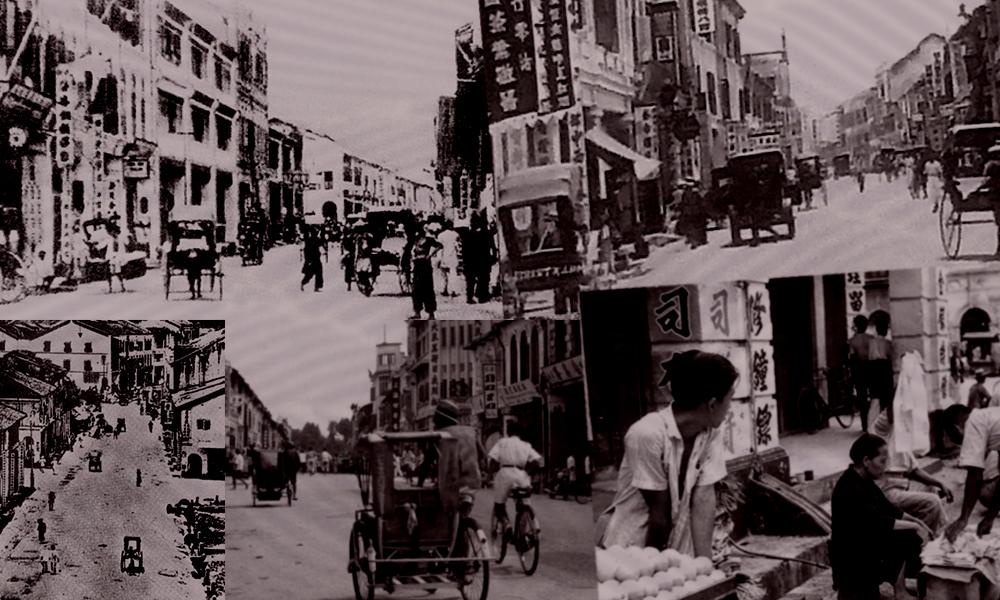 During the end of 19th century, Petaling Street was a street full of opium dens, gambling houses and brothels. In the middle of 20th century, there are many shops which sold gold, cloths and wine in order to fulfil the needs of Chinese migrants.
During the end of 19th century, Petaling Street was a street full of opium dens, gambling houses and brothels. In the middle of 20th century, there are many shops which sold gold, cloths and wine in order to fulfil the needs of Chinese migrants.
According to a book named 'The History of Kuala Lumpur’s Chinese' written by Wen Guzhi, Kota Raya today was a gathering place of Chinese migrants before.
“......The area near Jalan Silang is also known as ‘The Flower Street’, Flower means prostitutes…”
“There was a triangle-shaped open space in Jalan Tun Tan Cheng Lock, which is now the Kota Raya Shopping Complex, it was bazaar with a row of stalls.”
When the development around the Kota Raya area became saturated, the city centre began to shift; the economic and business zones began to expand to surrounding areas, while Kota Raya slowly became a Chinese traditional community, abandoned by the locals.
When most of the Chinese moved out, the houses and shops of Kota Raya were rented to migrant workers, and became an enclave in the middle of the city centre, for migrant workers to build their life, and helped Kota Raya regain some of its lost economic lustre.
RM12.50 / month
- Unlimited access to award-winning journalism
- Comment and share your opinions on all our articles
- Gift interesting stories to your friends
- Tax deductable
